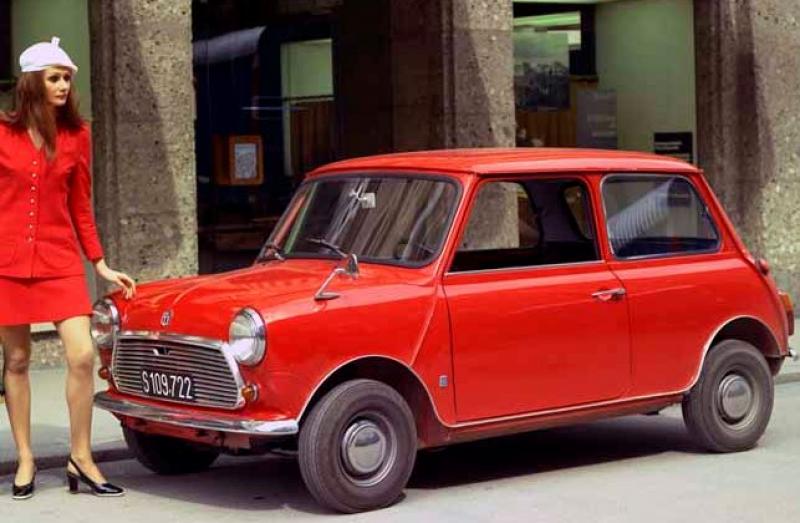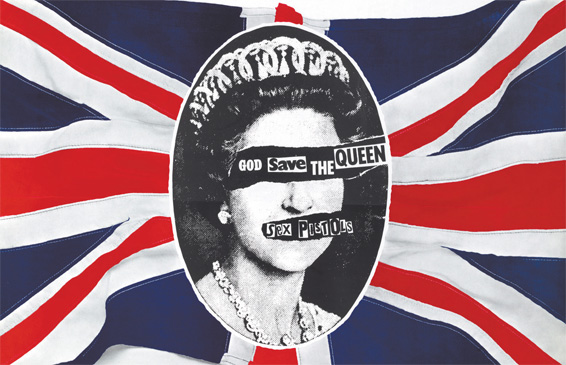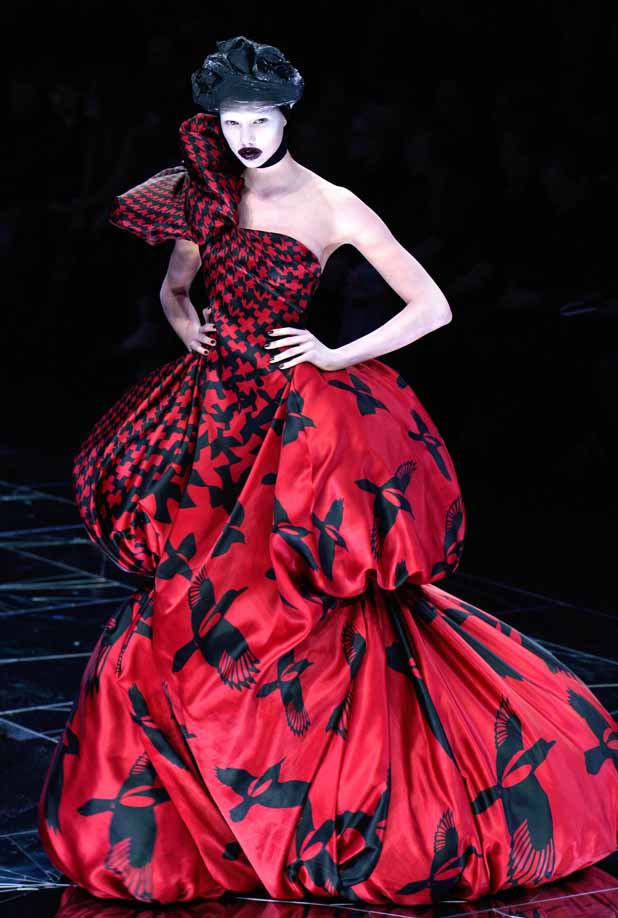British Design 1948 - 2012: Innovation in the Modern Age, Victoria & Albert Museum | reviews, news & interviews
British Design 1948 - 2012: Innovation in the Modern Age, Victoria & Albert Museum
British Design 1948 - 2012: Innovation in the Modern Age, Victoria & Albert Museum
An exhilarating exhibition that celebrates Britain's design creativity

The V&A has played a blinder. This extraordinary, exciting and unexpected exhibition provides endless trips down memory lane for many and will be a revelation for others. Ignore the clunky title, moving us from the postwar Olympics of 1948 to Olympic year 2012, and just go.
The anthology ranges from the Apple Mac – British-born designer Jonathan Ive – to the Mini (main picture), launched in 1959 by Smyrna-born Sir Alex Issigonis. And these symbolise the story that is implicit in the narrative, which is the vanishing act of industry, of actually making things: Apple Macs made in the USA, the Mini long gone and when revived, owned by BMW. Designed in Britain, made elsewhere.
There is punk rock and creative anarchy alongside increasingly quaint design, evoking nostalgia for a Britain that never was
Manufacturing has all but vanished. Design though, aka the creative industries, has become a significant energiser of the economy, domestically and internationally.
Economically deflated and defeated as a consequence of its wartime victory, Britain defiantly produced Britain Can Make It at the V&A in 1946 (it took the whole two-month supply of new glass in London to repair the museum’s windows in time for the show). The current British design show demonstrates that Britain did – more or less – make it, but not by making. Who would have thought that imaginative innovation would have been so much a characteristic of Britain making it, whilst still clinging in so many ways to old fashioned traditions? There is punk rock and creative anarchy alongside increasingly quaint design, successfully evoking nostalgia for a Britain that never was: the poignant example is Laura Ashley smocking, pintucks, floral patterns and all.
The contrast is splendidly shown in the first main section, Tradition and Modernity. Here, of course, is the 1951 Festival of Britain, including the 15ft preparatory drawing for the Skylon, on view for the first time since being unearthed from the National Archives. There’s also John Piper’s outdoor mural for the Homes and Gardens Pavilion, and Ernst Race’s airy metal chairs designed for the South Bank terrace. A nine foot high maquette by John Piper and Patrick Reyntiens of the glorious stained glass Baptistry window for Basil Spence’s Coventry Cathedral, rising like the proverbial phoenix from the ashes, is remarkably beautiful and affecting. And just across the way is a Cecil Beaton photograph of the Queen in Coronation robes, and a sumptuous, heavily embroidered Norman Hartnell ball gown for the Queen’s visit to Paris.
 The stone statue of the Family by Henry Moore, pretty substantial at six foot tall, 1.5 tonnes, normally graces the town centre of Harlow New Town (one of 11 New Towns started after the war, Milton Keynes the most successful and still growing.) It reminds us vividly of the burgeoning optimism and hope, encapsulated in the fledgling welfare state (National Health, anyone?) of the time. Anyone could successfully navigate in this brave new world, particularly when aided by David Mellor’s streamlined traffic lights, and the arresting and affecting Children Crossing Sign designed for the Ministry of Transport by Margaret Calvert and Jock Kinneir in 1964 (pictured right), one of a series of pictograph road warnings and instructions now used internationally.
The stone statue of the Family by Henry Moore, pretty substantial at six foot tall, 1.5 tonnes, normally graces the town centre of Harlow New Town (one of 11 New Towns started after the war, Milton Keynes the most successful and still growing.) It reminds us vividly of the burgeoning optimism and hope, encapsulated in the fledgling welfare state (National Health, anyone?) of the time. Anyone could successfully navigate in this brave new world, particularly when aided by David Mellor’s streamlined traffic lights, and the arresting and affecting Children Crossing Sign designed for the Ministry of Transport by Margaret Calvert and Jock Kinneir in 1964 (pictured right), one of a series of pictograph road warnings and instructions now used internationally.

What happened then, as Britain dragged itself out of the deprivations of war and its aftermath was, of course, fragmentation – a social history of starts and stops, boom and bust, economic success and recession. Or, as the exhibition has it, subversion, innovation and creativity. There is the Coldstream Report that transformed for good or ill the nation’s art schools; the sparks of rebellion of 1968 led by those same art students; the Sex Pistols poster of the Queen blindfolded and gagged (by Jamie Reid: pictured above). Here is Hockney’s iconic painting We 2 Boys Together Clinging as the Wolfenden Report changed the sexual climate of Britain. We see a series of film clips celebrating pop rock from the Pet Shop Boys to Bryan Ferry, Derek Jarman’s ingenious and ingenuous Jubilee, an affectionately Rude Britannia, no longer shocking but rather quaintly charming with the passage of time.
 We exit by way of Alexander McQueen’s ravishing and impossibly brilliant red-and-black ball gown (pictured right) from his 2009 Horn of Plenty collection – alongside models and photographs of Zaha Hadid’s iconic London Aquatics Centre 2011, already an Olympian legacy. Along the way we’ve noticed the new universities (Denys Lasdun’s University of East Anglia, with a bow to Essex and Sussex), we’ve cleaned up with the Dyson vacuum cleaner, picked up on British Rail’s logo and Kenneth Grange’s Intercity. Concorde sums up one aspect: magnificent, but already on the scrap heap, fit only for museums (Brooklands, Duxford). Meanwhile the export success of our starchitects – building the brave new world internationally from Richard Rogers to Norman Foster – is another. Richard Hamilton invents pop art and memorialises Swinging London - a print of Mick Jagger in handcuffs. There is Biba and Bazaar, Mary Quant and Vivienne Westwood, and Peter Blake and Jann Haworth’s Sgt Pepper’s Lonely Heart Club Band.
We exit by way of Alexander McQueen’s ravishing and impossibly brilliant red-and-black ball gown (pictured right) from his 2009 Horn of Plenty collection – alongside models and photographs of Zaha Hadid’s iconic London Aquatics Centre 2011, already an Olympian legacy. Along the way we’ve noticed the new universities (Denys Lasdun’s University of East Anglia, with a bow to Essex and Sussex), we’ve cleaned up with the Dyson vacuum cleaner, picked up on British Rail’s logo and Kenneth Grange’s Intercity. Concorde sums up one aspect: magnificent, but already on the scrap heap, fit only for museums (Brooklands, Duxford). Meanwhile the export success of our starchitects – building the brave new world internationally from Richard Rogers to Norman Foster – is another. Richard Hamilton invents pop art and memorialises Swinging London - a print of Mick Jagger in handcuffs. There is Biba and Bazaar, Mary Quant and Vivienne Westwood, and Peter Blake and Jann Haworth’s Sgt Pepper’s Lonely Heart Club Band.
The show is a glittering Aladdin’s cave: 250 objects from the V&A’s own collections, 100 borrowed nationally and internationally. But it is also the tiniest of samplings (new parlour game to debate what should have been in, or possibly out: I heard one visitor really upset that there were no Maclaren baby buggies). However, there's more than enough to make us realise how we define ourselves by things, and that those things are designed and made.
Most of us will recognise something we have at home, or something very like it, making the exhibition feel curiously intimate. It is a turnout of the nation’s attic combined with our shop front, a multi-layered social history told through objects.
- British Design 1948 – 2012: Innovation in the Modern Age at the Victoria & Albert Museum until 12 August
rating
Explore topics
Share this article
The future of Arts Journalism
You can stop theartsdesk.com closing!
We urgently need financing to survive. Our fundraising drive has thus far raised £49,000 but we need to reach £100,000 or we will be forced to close. Please contribute here: https://gofund.me/c3f6033d
And if you can forward this information to anyone who might assist, we’d be grateful.

Subscribe to theartsdesk.com
Thank you for continuing to read our work on theartsdesk.com. For unlimited access to every article in its entirety, including our archive of more than 15,000 pieces, we're asking for £5 per month or £40 per year. We feel it's a very good deal, and hope you do too.
To take a subscription now simply click here.
And if you're looking for that extra gift for a friend or family member, why not treat them to a theartsdesk.com gift subscription?
more Visual arts
 'We are bowled over!' Thank you for your messages of love and support
Much-appreciated words of commendation from readers and the cultural community
'We are bowled over!' Thank you for your messages of love and support
Much-appreciated words of commendation from readers and the cultural community
![SEX MONEY RACE RELIGION [2016] by Gilbert and George. Installation shot of Gilbert & George 21ST CENTURY PICTURES Hayward Gallery](https://theartsdesk.com/sites/default/files/styles/thumbnail/public/mastimages/Gilbert%20%26%20George_%2021ST%20CENTURY%20PICTURES.%20SEX%20MONEY%20RACE%20RELIGION%20%5B2016%5D.%20Photo_%20Mark%20Blower.%20Courtesy%20of%20the%20Gilbert%20%26%20George%20and%20the%20Hayward%20Gallery._0.jpg?itok=7tVsLyR-) Gilbert & George, 21st Century Pictures, Hayward Gallery review - brash, bright and not so beautiful
The couple's coloured photomontages shout louder than ever, causing sensory overload
Gilbert & George, 21st Century Pictures, Hayward Gallery review - brash, bright and not so beautiful
The couple's coloured photomontages shout louder than ever, causing sensory overload
 Lee Miller, Tate Britain review - an extraordinary career that remains an enigma
Fashion photographer, artist or war reporter; will the real Lee Miller please step forward?
Lee Miller, Tate Britain review - an extraordinary career that remains an enigma
Fashion photographer, artist or war reporter; will the real Lee Miller please step forward?
 Kerry James Marshall: The Histories, Royal Academy review - a triumphant celebration of blackness
Room after room of glorious paintings
Kerry James Marshall: The Histories, Royal Academy review - a triumphant celebration of blackness
Room after room of glorious paintings
 Folkestone Triennial 2025 - landscape, seascape, art lovers' escape
Locally rooted festival brings home many but not all global concerns
Folkestone Triennial 2025 - landscape, seascape, art lovers' escape
Locally rooted festival brings home many but not all global concerns
 Sir Brian Clarke (1953-2025) - a personal tribute
Remembering an artist with a gift for the transcendent
Sir Brian Clarke (1953-2025) - a personal tribute
Remembering an artist with a gift for the transcendent
 Emily Kam Kngwarray, Tate Modern review - glimpses of another world
Pictures that are an affirmation of belonging
Emily Kam Kngwarray, Tate Modern review - glimpses of another world
Pictures that are an affirmation of belonging
 Kiefer / Van Gogh, Royal Academy review - a pairing of opposites
Small scale intensity meets large scale melodrama
Kiefer / Van Gogh, Royal Academy review - a pairing of opposites
Small scale intensity meets large scale melodrama
 Jenny Saville: The Anatomy of Painting, National Portrait Gallery review - a protégé losing her way
A brilliant painter in search of a worthwhile subject
Jenny Saville: The Anatomy of Painting, National Portrait Gallery review - a protégé losing her way
A brilliant painter in search of a worthwhile subject
 Abstract Erotic, Courtauld Gallery review - sculpture that is sensuous, funny and subversive
Testing the boundaries of good taste, and winning
Abstract Erotic, Courtauld Gallery review - sculpture that is sensuous, funny and subversive
Testing the boundaries of good taste, and winning
 Edward Burra, Tate Britain review - watercolour made mainstream
Social satire with a nasty bite
Edward Burra, Tate Britain review - watercolour made mainstream
Social satire with a nasty bite
 Ithell Colquhoun, Tate Britain review - revelations of a weird and wonderful world
Emanations from the unconscious
Ithell Colquhoun, Tate Britain review - revelations of a weird and wonderful world
Emanations from the unconscious

Add comment